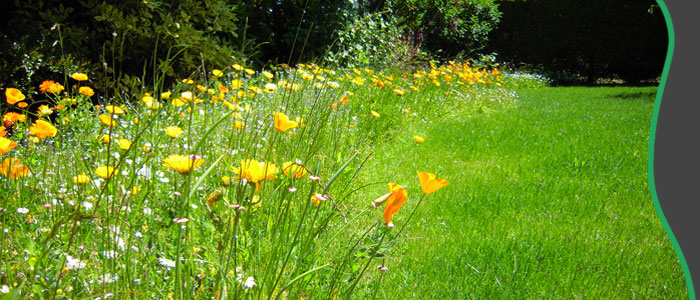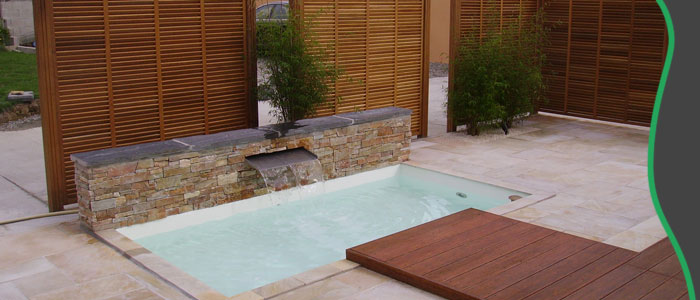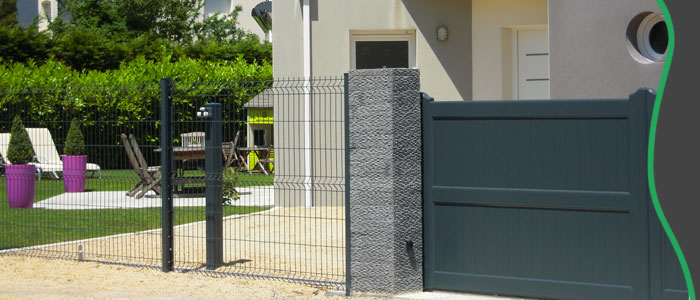In American Hookup, sociologist Lisa Wade explores a topic on which quite a few opine but on which the analysis literature is a lot less generally invoked: the sexual intercourse lives of undergraduate learners. Higher education pupils, op-ed columnists, and members of the common general public have published essays alternately celebrating, condemning, and lamenting the rise of a supposedly carefree and attachment-light-weight manner of sexual conversation that has appear to be acknowledged in popular discourse as the ‘hookup tradition.’ Wade joins this ongoing discussion and brings to it a wealth of knowledge, a keen eye and intellect, and an apparent regard and fondness for the students with whose tales she has been entrusted. The outcome is a persuasive narrative that is at occasions heartbreaking and at other occasions practically nothing limited of hilarious.
- craigslist alternative for hookups
- local hookupz com
- coomeet com
- casual sex meetup
Wade sets the scene by summarizing some of the dialogue of intercourse on campus that has happened in the well-liked and educational presses in modern decades, noting that ‘the idea that school students are owning a lot of sex is absolutely an enthralling myth’ ‘p. 17′. In Wade’s check out, even so, the dilemma is not essentially hookups by themselves, as the common college student just is not engaging in just about anything close to the nonstop whirlwind of sexual action that is generally free lesbian hookup imagined to be the norm on faculty campuses. As a substitute, the dilemma is the hookup lifestyle, a established of shared understandings and norms about whether and how to hook up that pervades most American college campuses. It is really worth noting that while Wade’s argument that the hookup tradition is pervasive is persuasive, her framing of who it has an effect on is actually confined to traditional-aged college students on household school campuses that functionality as complete institutions’that is to say, enclosed spaces in which students’ life are formally directed and where college students stay and work isolated from the broader society. By contrast, the two commuter campuses Wade visited ended up significantly less extensively in the grip of the hookup culture. For the bulk of the book, nonetheless, classic-aged pupils on four-yr household campuses are dealt with as the regular college or university pupil, a framing that some may obtain out of move with shifting demographics of college students in bigger education and learning.
best site to find girls
milf meet
In the initially chapter, Wade draws on her students’ stories to supply the uninitiated a richly descriptive how-to guide for hooking up, getting readers inside of the activities of pregaming, grinding, hooking up, and write-up-hookup effect management all-around which so a great deal of the social and party life of undergraduates revolve. From there, Wade moves to supply some historical context for ‘how intercourse turned enjoyable.’ Tracing thoughts about sex by the twentieth century, including the feminist motion and sexual revolution, Wade apparently argues that ‘fun’ has turn out to be joined to ‘freedom,’ creating intercourse a way for youthful individuals to assert and confirm their liberation. Exciting is not just about sexual intercourse, however in the up coming chapter, Wade proceeds to pull on the thread of entertaining, talking about how exciting is critical to the promoting of the college experience. I still left this chapter with questions about whether or not this looking through of the role of pleasurable in college overestimates the relevance of society and downplays the structural realities that drive college students to go to university and whether or not the narrative emphasizing enjoyment speaks principally to young, white, middle-class learners or is inclusive of learners of a broader set of backgrounds.
In chapters four and five Wade discusses two unique orientations to the hookup culture: people who choose out and all those who choose in. The attention to learners who opt out of lively participation in the hookup tradition is a needed antidote to handwringing’both on the portion of learners and columnists’about the notion that everybody is performing it. Even in the inhabitants of college students who do choose in, Wade thoughtfully teases out the nuances amongst groups she calls ‘utilitarians,’ ‘experimentalists,’ ‘enthusiasts,’ and ‘strivers.’ Even though many students take part in the hookup society, they do so with various levels of excitement and a myriad of rationales.
In the up coming number of chapters, Wade explores the psychological impacts of the hookup culture. In chapter 6 she cracks the veneer of carelessness that characterizes hookups and, to borrow her temperature metaphor, receives at how pupils actively perform to continue to keep their intercourse lives very hot and their hearts cold. Wade even further explores gender asymmetries in engagement in the hookup lifestyle, obtaining that in heterosexual hookups, male satisfaction is centered and feminine satisfaction is usually an afterthought at greatest and shamed and denigrated at worst. Wade, citing pupil conversations, exhibits how hooking up is similar to standing and how adult men strategically prioritize their enjoyment as a way to stay on prime of the social hierarchy.
In chapter 8, in one of the most touching chapters of the ebook, Wade discusses students’ basically human will need to be desired. In this article once again she draws out critical conclusions about the gender asymmetries ‘e.g., guys want, while ladies are wanted’ and how the pressure to be fascinating and keep an elevated posture in the social hierarchy will take a considerable toll on undergraduate women of all ages. Wade’s use of a actuality television exhibit, Fight of the Bods, to connect university women’s struggles to greater societal ills is especially powerful in this article, as it implicates society as a entire in the building of not possible and unattainable ideals that established women up to feel like failures.
Chapter nine is by significantly the most harrowing component of the e-book. In it Wade tackles 1 of the quite worst consequences not just of the hookup society but of society’s acceptance of gendered abuse and violence: sexual assault on faculty campuses. Individuals who are survivors or merely faint of heart may well want to physical exercise treatment when approaching this chapter. I observed it upsetting to examine the intestine-wrenching tales pupils shared of violations ranging from absence of enthusiastic, affirmative consent to brutal rape. Wade thoughtfully discusses these hard tales, interrogating how the hookup tradition shields and allows abusers and diplomatically presenting that, in addition to the ‘true predators’ ‘p. 213′, the hookup culture creates house in which ‘men that feel fantastic, guys that are superior, from time to time rape’ ‘p. 223′. When I individually item to that statement’if ‘good’ people today rape, then I’m not confident how helpful a group ‘good people’ is anymore’I deeply appreciate Wade’s sociological treatment not to demonize folks but to attend to how cultural and structural forces condition individuals’ steps. In a time when Title IX’informed direction on how universities need to manage sexual assault is being rescinded, Wade’s analysis highlights just how urgent and in want of intervention the problem of campus sexual assault really is.
In the remaining chapter Wade shares the effects of her observe-up interviews with some of her primary contributors, most of whom experienced due to the fact graduated. She traces how customers of the distinct groups’enthusiasts, dabblers, and abstainers’approached the hookup lifestyle by the rest of their undergraduate professions. And then, moving outside of the hazy ‘drunkworld’ of the faculty hookup lifestyle, Wade exhibits how these young older people navigate the equally complicated terrain of adult dating. In this dialogue of courting in the true globe, Wade drives residence that the hookup lifestyle is just not a phenomenon constrained to university campuses equally in the introduction and in the closing chapter, she briefly links it to trends that proceed exterior of the campus gates, bringing us entire circle. Wade concludes by inquiring hard queries. How do we retain the room for enjoyment on higher education campuses although cutting down the threat that at present accompanies the hookup culture? How do we leave area for everyday sexual encounters although also selling an ethic of better care? How do we remodel sex on university campuses, and in society as a total, to include things like safer, much more fulfilling encounters for folks of all genders, races, courses, sexualities, and persuasions?
I suspect Wade is proper when she concludes that ‘if we want to repair hookup lifestyle, we have to correct American culture’ ‘p. 248′. The form of misogyny that will make the campus ‘orgasm gap’ possible is endemic to American culture. Correcting American tradition is no easy feat, but Wade remains optimistic that, owing to faculty campuses’ status as full institutions, meaningful transform is achievable, and probably more quickly than we may envision. I desire American Hookup incorporated a sturdy dialogue of what sorts of structural and cultural modifications Wade thinks may well ameliorate the current campus sex culture, but perhaps that is the work of a foreseeable future quantity.
Presented the large array of sources drawn on to complete this operate, I, as a reader and a researcher-in-teaching, wish this textual content bundled a methodological appendix. The information arrive from 4 distinctive resources: pupils in two classes at two liberal arts colleges who submitted journals and consented to their use in the review learners who engaged with Wade in the course of campus visits during her e-book tour educational and well-known press and campus newspaper articles or blog posts about the hookup society and public Online School Social Lifetime Survey information.
At periods it was hard to retain track of how considerably of the narrative was based on the journals and interviews of pupils in Wade’s study, how substantially on the info gathering she conducted whilst taking her analysis on the road, and how much on publicly accessible narratives shared in campus newspapers or on-line outlets, for which full context may possibly have been missing. Wade also notes early in the e-book that, dependable with qualitative exploration practices, names and pinpointing details have been adjusted, but she also notes that ‘while I keep real to the stories their life inform us . . . other specifics have been improved and in some cases dramatized’ ‘p. 21′. Provided the amazing array of sources drawn on, and the sheer quantity of colleges visited ‘p. 24′ and talked about in the guide, a discussion of how Wade analyzed and created feeling of all all those narratives, and what it means for details to be ‘dramatized,’ would have been beneficial context for all audience and of great interest to other scientists.
On the entire, although, American Hookup is compellingly wrought. Wade attracts on a staggering breadth of resources to bolster her argument, generally attending to marginalized teams in discussions of queerness on campus, how participation in the hookup society is diverse for some racial minorities, and other things that go away some learners on the fringes of the dominant culture. There had been, however, details at which I located myself wishing for additional assessment of how race and class shape engagement in the hookup culture, presented that the descriptions of functions as staying mostly about intercourse and liquor resonated with my comprehension of the dominant party tradition but felt significantly less accurate for minority areas that run on campus and are generally an significant portion of the faculty celebration scene. The most robust discussion of how expressions of sexuality on campus are racialized was in the chapter on opting out, which remaining me asking yourself about how race impacted participation in the hookup tradition for individuals who opted in.
Regardless of these moments when I thought there was area for further more investigation, and the occasional claim I believed merited further interrogation or more powerful substantiation, for the most part I was confident by Wade’s analysis of the hookup tradition, its pervasiveness, and the intricacies of its inner workings. And similarly crucial, I was completely enthralled and drawn into the entire world Wade provides. American Hookup is a guide that really should be of broad general public curiosity and enchantment, whether one is a sociologist of lifestyle, a higher education and learning researcher, an administrator on a university campus, or merely an intrigued citizen. In exploring the sex lives of undergraduates and the lifestyle surrounding their intimate routines, Wade holds up a mirror to American society and to our very own innermost needs to have enjoyable, be safe and sound, and be free.


